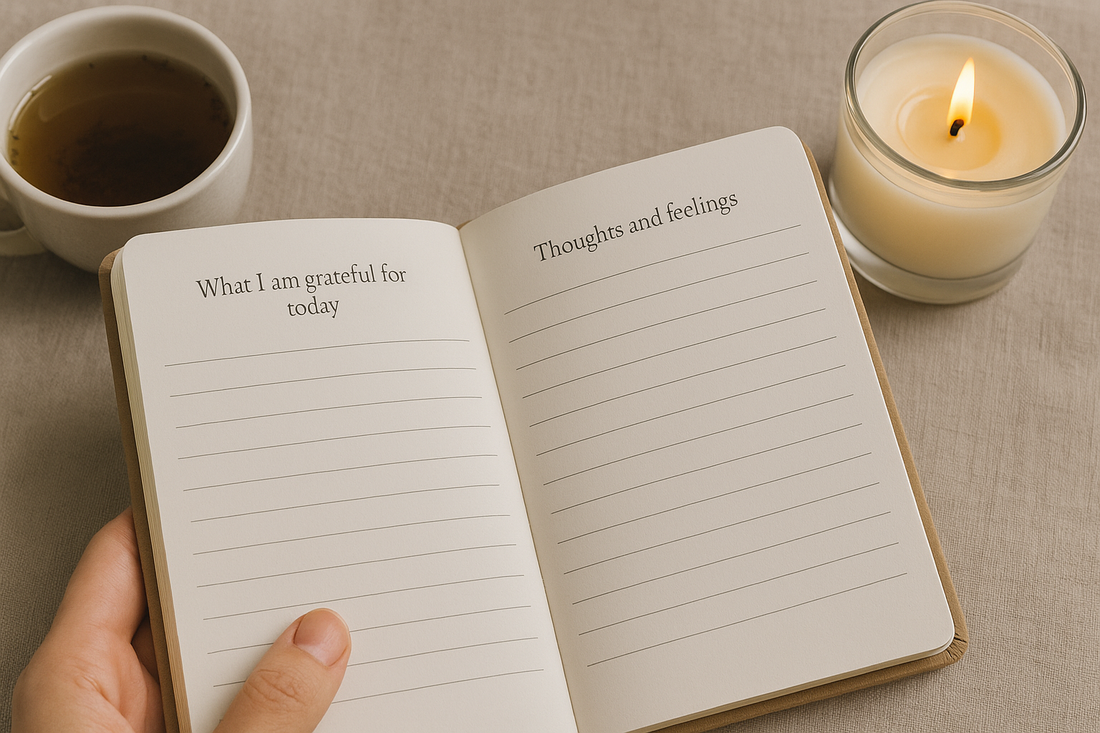
Journaling for Calm and Emotional Clarity
I. Introduction
In a world that constantly demands our attention, journaling offers a quiet moment to reconnect with ourselves.
Writing down our thoughts isn’t just a hobby — it’s one of the most powerful tools for emotional regulation, clarity, and inner calm.
Whether you’re managing stress, processing emotions, or simply seeking mindfulness, journaling can help you slow down and breathe again.
II. Why Journaling Helps Calm the Mind
When emotions feel overwhelming, the act of writing brings structure to chaos.
Studies show that journaling activates both the emotional and analytical parts of the brain, helping to release tension and reframe anxious thoughts.
By transferring your feelings from mind to paper, you:
• Reduce stress and overthinking
• Gain insight into hidden emotional patterns
• Improve self-awareness and acceptance
• Create space for mindfulness and gratitude
Journaling becomes not just an outlet but a wellness ritual — one that promotes balance, calm, and resilience.
III. How to Journal for Emotional Clarity
There’s no perfect way to journal, but intentionality matters. Try these approaches:
• Morning Journaling – Begin the day with reflection. Write three sentences about how you feel and what you want to focus on. This sets emotional boundaries and mental clarity for the day.
• Evening Journaling – Use the night to unwind. Reflect on what went well, what challenged you, and what you’re grateful for. This helps calm the nervous system and improves sleep quality.
• Emotional Labeling – When writing, name your emotions instead of hiding them (“I feel anxious” → “I feel uncertain but hopeful”). This simple act reduces emotional intensity and brings clarity.
IV. Tools That Deepen the Experience
To elevate journaling into a meaningful ritual, surround yourself with sensory cues that promote calm:
• Light soy & natural candles for a soft, grounding glow.
• Use aroma gift sets or diffuser & mist blends to infuse your space with calming scents.
• Keep a cup of caffeine-free wellness tea nearby to soothe your senses.
• Write in a dedicated gratitude & reflection journal to track your emotional progress over time.
Each of these elements turns journaling from a simple act into a full self-care experience that reconnects body, mind, and space.
Linked Collections (↗)
• Gratitude & Reflection Journals
V. Turning Journaling into a Wellness Ritual
Like meditation or breathwork, journaling’s power lies in consistency.
Even five minutes a day builds emotional awareness and resilience.
Combine it with small rituals — lighting a candle, sipping tea, or using gentle aromatherapy — to anchor your routine in calm.
As Berrion believes, “Calm isn’t found in silence; it’s found in mindful moments.”
Your journal becomes a sacred space where thoughts transform into peace.
VI. FAQ: Journaling for Calm and Emotional Clarity
Q1. How often should I journal for emotional clarity?
A1. Just 5–10 minutes daily can create noticeable emotional balance. The key is consistency, not perfection. Pair journaling with your tea or aroma ritual for better mindfulness.
Q2. What should I write about when I feel anxious or overwhelmed?
A2. Start with how your body feels — tight shoulders, racing thoughts, or fatigue. Describing sensations helps release them and makes emotions easier to process.
Q3. Can journaling replace therapy?
A3. Journaling supports emotional well-being but doesn’t replace professional care. It’s most effective as a complementary mindfulness practice between therapy sessions.
Q4. How can I make journaling more enjoyable?
A4. Set the scene. Light a candle, play soft music, and use a beautiful journal you love. Pairing sensory comfort with reflection turns journaling into something you’ll look forward to daily.
🌿 Recommended Berrion Collections (↗)
• Gratitude & Reflection Journals
• Soy & Natural Candles
• Aroma Gift Sets
• Caffeine-Free Wellness Teas


